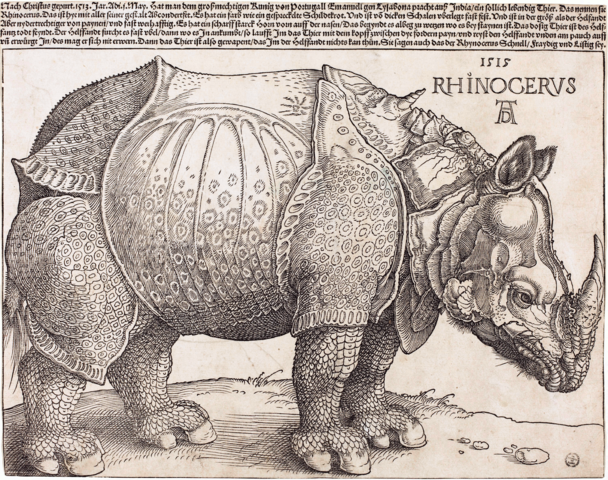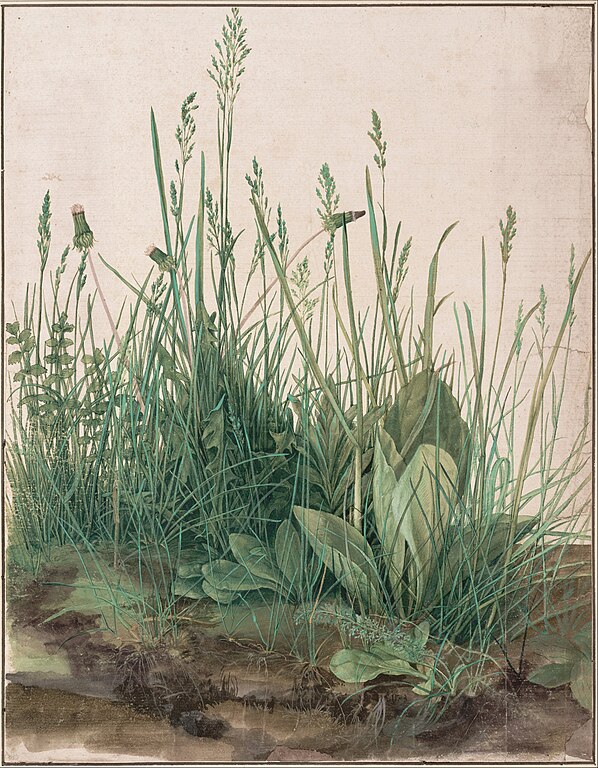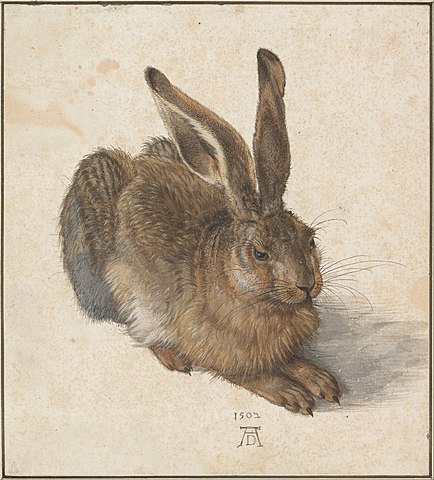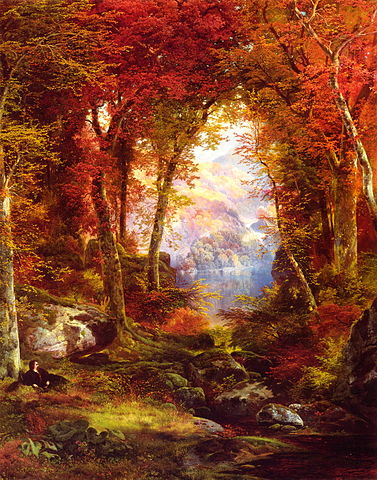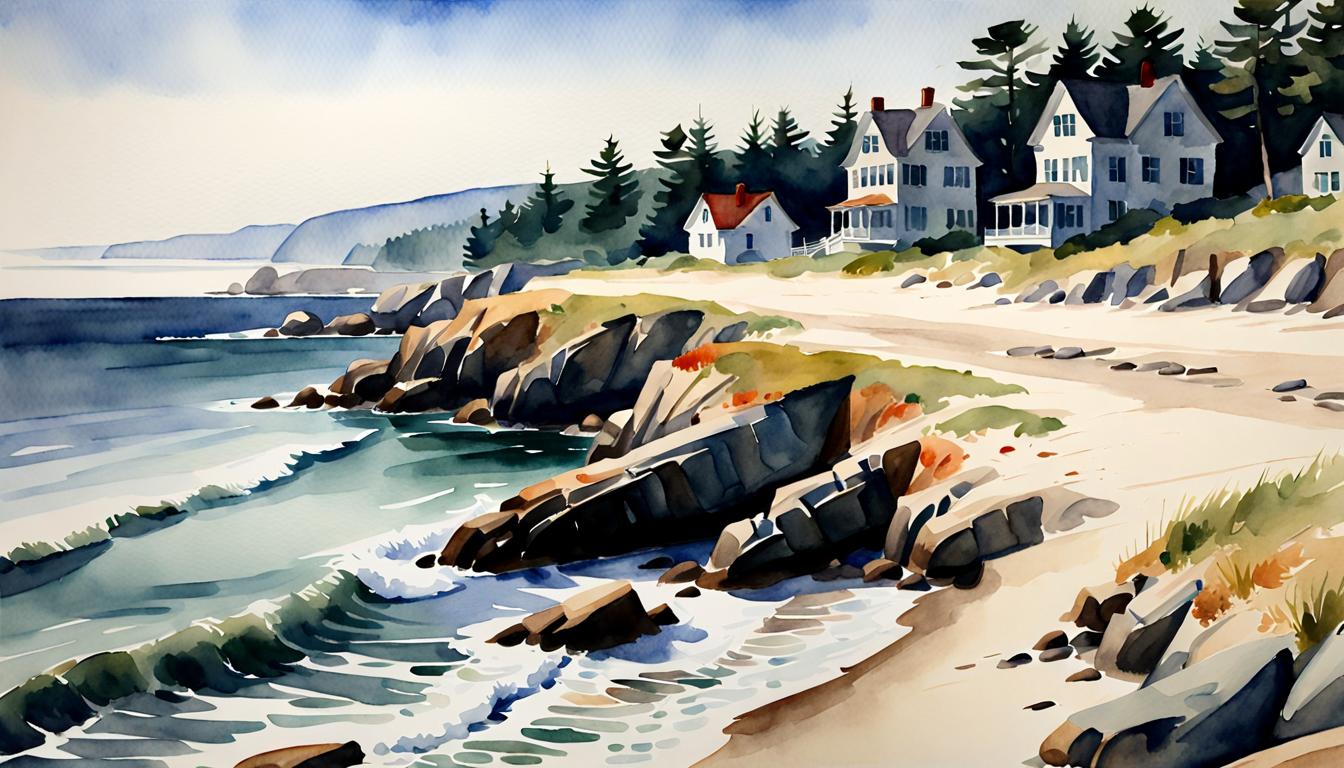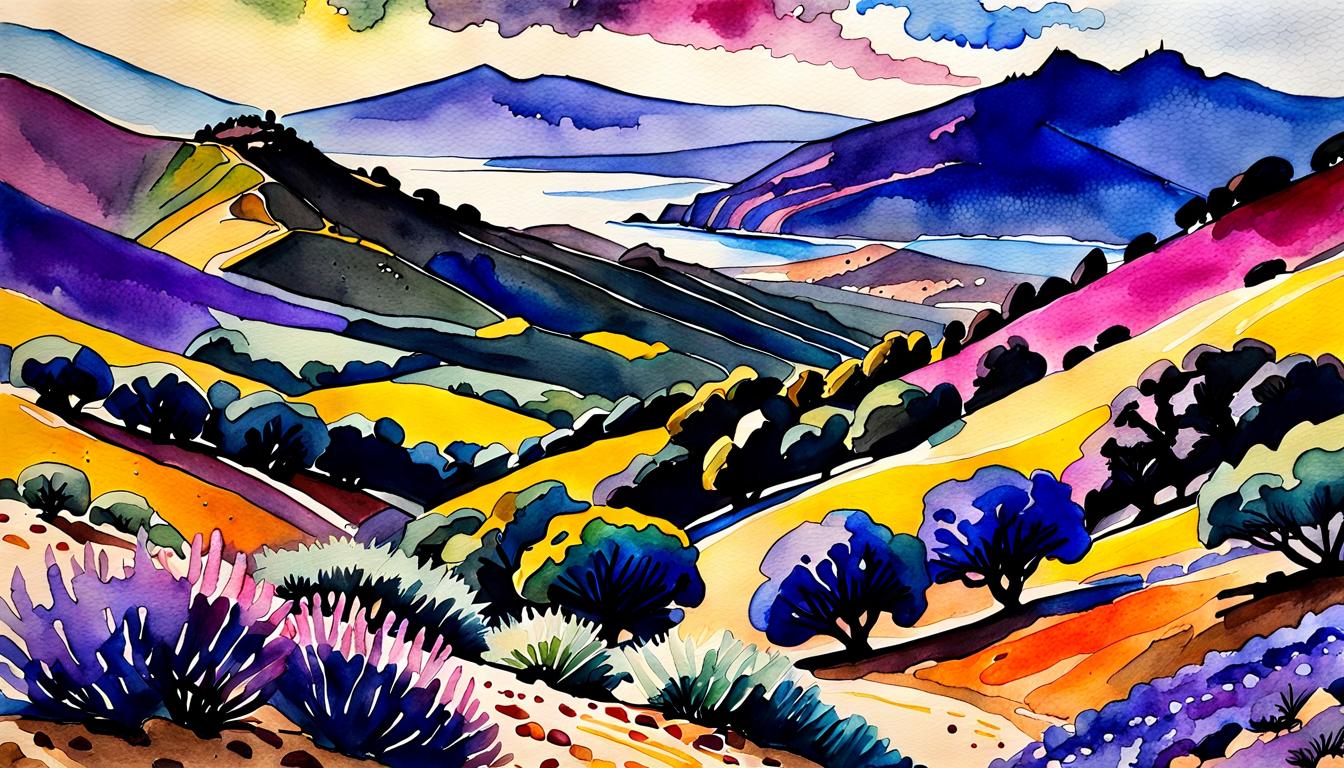When it comes to the world of art, few names command as much reverence as Albrecht Dürer. The illustrious German artist, born in the late 15th century, left an indelible mark on the art world with his remarkable watercolor works. Today, we delve into the secrets behind Dürer’s detailed realism in watercolor and explore the techniques that continue to inspire contemporary and modern artists.
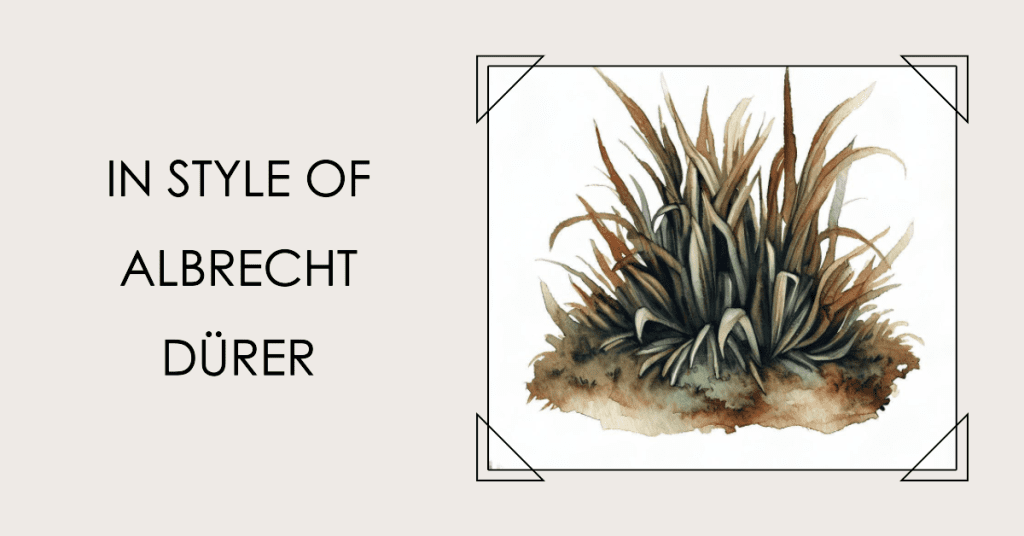
Early Life and Artistic Awakening
Albrecht Dürer’s artistic genius was nurtured from a young age. Born in Nuremberg, Germany, on May 21st, 1471, he was the third child of Albrecht Dürer the Elder, a prosperous goldsmith of Hungarian descent, and Barbara Holper. Dürer’s immersion in the world of craftsmanship began in his father’s workshop, where he learned the meticulous art of metalwork. This early exposure to precision and detail would lay the groundwork for his exceptional eye as an artist.
Recognizing his son’s extraordinary talent, Dürer’s father apprenticed him to Michael Wolgemut, a renowned painter and woodcut artist, in 1486. Wolgemut’s workshop was a hub of artistic activity, producing altarpieces, stained glass, and woodcut illustrations for books. During this formative apprenticeship, Dürer not only mastered the techniques of painting but also honed his skills in woodcut design, a medium in which he would later excel.
Beyond his formal training, Dürer was influenced by the vibrant artistic landscape of Nuremberg, a thriving center of trade and Renaissance culture. The works of artists like Martin Schongauer, whose intricate engravings showcased masterful linework, undoubtedly fueled Dürer’s curiosity and ambition.
This rich artistic environment, coupled with Dürer’s innate talent and meticulous training, set the stage for his remarkable journey as one of the most influential artists of the Northern Renaissance.
Albrecht Dürer’s Watercolor Works
Dürer’s watercolor works are a testament to his unwavering dedication to art. These masterpieces, characterized by their intricate detailing and lifelike representations, showcase his prowess in this medium. Notable among his watercolor works are his landscapes, wildlife, and botanical studies, each bearing the unmistakable stamp of Dürer’s meticulous approach to art.
These artworks provide us with a window into his creative mind and his relentless pursuit of realism in watercolor. As we examine his works, we begin to unravel the secrets that made Dürer a true visionary in the art world.
Immerse yourself in Dürer’s watercolor world at The Met and witness the magic of his brushwork.
Materials and Tools
Dürer’s quest for perfection extended to his choice of materials and tools. He recognized that the foundation of a great artwork lies in the quality of the supplies used. To achieve the level of detail and realism he sought, Dürer selected the finest watercolor pigments, brushes, and paper available in his era.
His attention to detail extended beyond the canvas, emphasizing the importance of the artist’s connection with their tools. This commitment to excellence in materials set the stage for his groundbreaking watercolor techniques.
Now, let’s delve into the techniques that enabled Dürer to create watercolor paintings that continue to mesmerize art enthusiasts and inspire artists worldwide.
Watercolor Techniques Employed by Dürer
Albrecht Dürer was a master of watercolor techniques that laid the foundation for his detailed realism. His approach involved several key elements:
- Layering Technique: Dürer’s paintings often involved meticulously layering colors to achieve depth and vibrancy. Each layer contributed to the intricate details that characterize his work.
- Drybrushing: He employed drybrushing to add texture and subtlety to his watercolors. This technique allowed for the controlled application of pigments.
- Glazing: Dürer used glazing to build up transparent layers of color, creating a luminous effect that added to the realism of his subjects.
- Color Mixing: His precise understanding of color theory enabled him to mix pigments effectively, achieving a broad spectrum of colors.
These techniques, when combined with his profound attention to detail, set the stage for the breathtaking realism present in his watercolor works.
Secret to Albrecht Dürer’s Detailed Realism in Watercolor: Attention to Detail
Dürer’s commitment to detail went beyond technique. His obsession with realism led him to meticulously study his subjects, whether it was the anatomy of animals or the intricacies of plants. He believed that true artistry lay in the ability to capture the essence of the subject matter.
His keen observation skills and dedication to rendering every nuance played a pivotal role in achieving the level of realism that continues to captivate art connoisseurs.
Dürer’s Use of Perspective and Composition
In addition to his technical prowess, Dürer was a master of perspective and composition. He understood that these elements were integral to creating a sense of realism. By skillfully employing perspective techniques and carefully composing his watercolor scenes, he transported viewers into the heart of his subjects.
Dürer’s ability to create depth and three-dimensionality within the confines of a two-dimensional medium was a hallmark of his genius. His works became windows into the natural world, inviting viewers to step inside and explore.
Dürer’s Place in Art History: Revolutionizing Watercolor
Albrecht Dürer’s detailed watercolors held a revolutionary position in the art world, both during his own time and within the broader history of the medium.
- Elevating a Humble Medium: Before Dürer, watercolor was often seen as a medium for preparatory sketches or nature studies. Dürer’s exceptionally detailed and lifelike watercolor paintings challenged this perception, demonstrating the potential for watercolor to be an expressive and standalone art form.
- Observation and Nature: Dürer’s relentless focus on realism resonated with the Renaissance emphasis on direct observation of the natural world. His meticulously rendered watercolor studies of plants, animals, and landscapes not only captured their beauty but also contributed to the growing scientific understanding of nature.
- Bridge between Art and Science: Dürer’s approach blurred the lines between artistic expression and scientific documentation. His botanical illustrations, for instance, were both aesthetically captivating and botanically accurate, making him a pioneer in the realm of natural history illustration.
- Enduring Legacy on Watercolor Tradition: Dürer’s elevation of watercolor and his meticulous approach greatly influenced subsequent artists. His detailed realism became an aspiration for watercolorists, inspiring generations to push the boundaries of the medium. Even centuries later, the echoes of his techniques and attention to detail can be seen in botanical illustrations and in the work of nature artists who strive for scientific precision alongside artistic beauty.
Albrecht Dürer’s Top 10 ArtWork
| Rank | Title | Description | Location |
|---|---|---|---|
| 1 | The Hare (1502) | A detailed watercolor of a hare, is considered one of the most realistic and beautiful watercolors ever created. | Albertina Museum, Vienna, Austria |
| 2 | The Great Piece of Turf (1503) | A watercolor of a clump of grass and flowers, considered a masterpiece of botanical illustration. | British Museum, London, England |
| 3 | Rhinoceros (1515) | A watercolor of a rhinoceros, based on a sketch by Dürer of a live rhinoceros that was brought to Europe in 1515. | Kupferstichkabinett, Berlin, Germany |
| 4 | Melencolia I (1514) | A complex and mysterious watercolor that is full of symbolism. | Albertina Museum, Vienna, Austria |
| 5 | View of the Danube Valley (1520) | A panoramic watercolor of the Danube Valley, painted during Dürer’s travels in Italy. | Graphische Sammlung Albertina, Vienna, Austria |
| 6 | Self-Portrait (1500) | A self-portrait that is considered one of the most famous self-portraits in art history. | Alte Pinakothek, Munich, Germany |
| 7 | Four Horsemen of the Apocalypse (1498) | A series of four watercolors depicting the Four Horsemen of the Apocalypse, based on the Book of Revelation. | Kupferstichkabinett, Berlin, Germany |
| 8 | Landscape with the Fall of Icarus (1495) | A watercolor that depicts the myth of Icarus, who flew too close to the sun and fell to his death. | Metropolitan Museum of Art, New York City |
| 9 | Saint Jerome in His Study (1521) | A watercolor that depicts Saint Jerome, a Christian saint and scholar. | Albertina Museum, Vienna, Austria |
| 10 | The Virgin and Child with a Flower (1503) | A watercolor that depicts the Virgin Mary and Child, with a flower in the foreground. | British Museum, London, England |
In conclusion, Albrecht Dürer’s detailed realism in watercolor was a product of his unwavering commitment to perfection. His choice of materials, mastery of techniques, and keen observation skills all played a role in creating the intricate and lifelike watercolor paintings that continue to inspire and captivate audiences worldwide. Dürer’s legacy lives on, serving as a testament to the enduring power of artistry and attention to detail.
FAQs About Albrecht Dürer’s Watercolors
FAQ 1: What were Dürer’s favorite watercolor subjects?
- Dürer had a penchant for landscapes, wildlife, and botanical subjects. His fascination with the natural world shines through in his watercolor works.
FAQ 2: How did Dürer achieve such intricate details in his watercolors?
- Dürer’s meticulous layering and drybrushing techniques allowed him to achieve the fine details that set his works apart.
FAQ 3: What were his favorite watercolor techniques?
- Dürer favored layering, drybrushing, glazing, and precise color mixing techniques to create his realistic watercolors.
